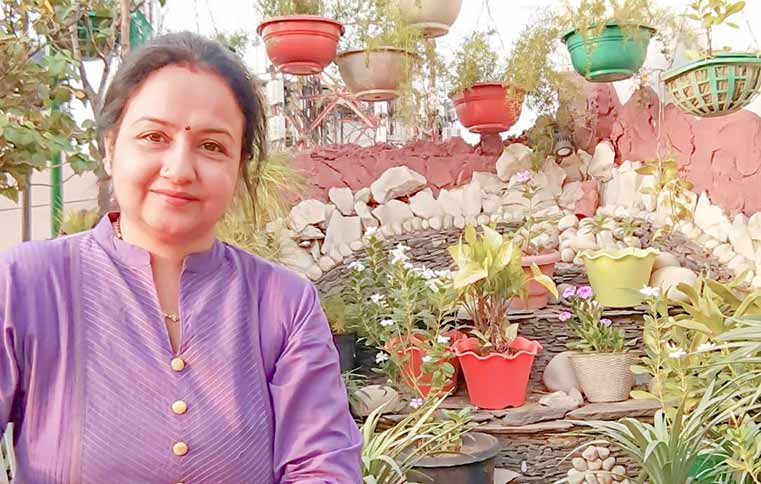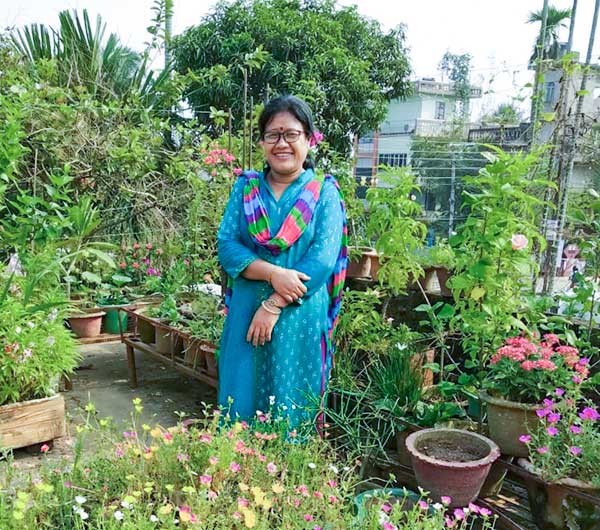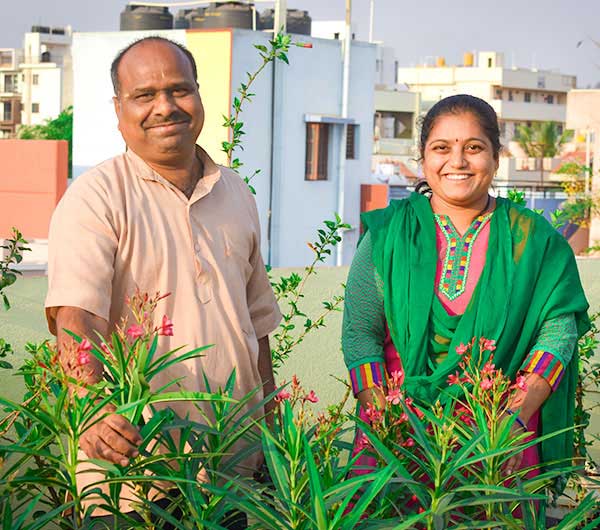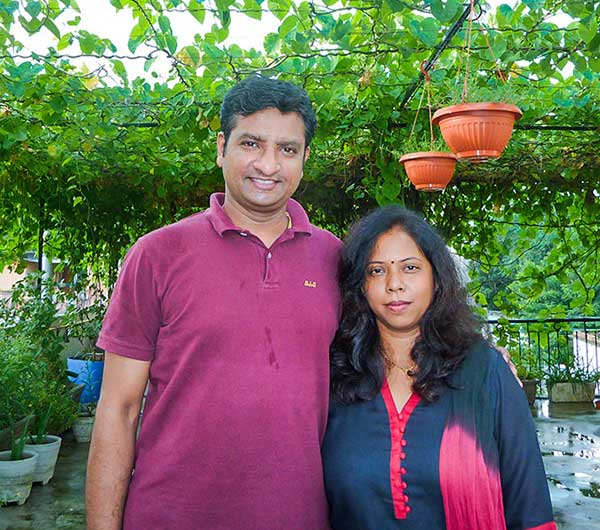The Setting Up of a Beautiful Urban Ecosystem
By: Muskan Aggarwal | Date: 23rd May 2018

A walk into nature, a breath of fresh air, the exuberance of plants with its rejuvenation is what a garden serves the purpose of, and in the recent trends of terrace gardening, such an experience has become possible.
This is because of gardeners incorporating entire ecosystems in their beautiful and dainty gardens. One such sight and experience can be sourced from the garden of Mrs. Kanchan Verma. She started her garden almost 25 years ago with 15-20 plants which have now reached a whopping 500, with variations in its kinds, like outdoor or indoor, and seasonal vegetables.

Since gardening is her hobby she designed her terrace garden according to her taste, and each and every plant has been planted in a pot by her very own hands. In fact, she visits flower shows in Delhi and nearby nurseries for new plants.
For maintaining a wonderful garden, it is necessary that one pays special attention to the soil and compost techniques that one uses, so we asked her about the same, to which she replied that she used a local soil mixed with sand, and cocopeat depending on the plant; and as for the compost techniques, usage of cow dung manure and vermicompost are her favourite.
In addition to this, she uses all the kitchen leftovers and dry leaves, fitting it in the soil before the plant goes in the pot thus being decomposed.

One would expect that a garden would require watering which becomes a daunting task if one thinks about it, but not for her. Since there are two water tanks at her terrace garden, she waters her plant with a pipe that connected to the motor and the tanks, making it easier and less time consuming.
According to her the motor serves two functions: one, for watering the plants and two, to create a waterfall function (due to its connection to the waterfall), which allows her to turn it on when required. She even manages the watering system according to the seasons.

Usually she waters her plants early in the morning, and evening as well in summers, but during winters and rains the water requirement changes drastically due to Delhi’s extreme weather conditions, meaning the requirement is every alternate day in winter and almost equivalent to none during rains.
In summers, she puts a net over her plants, converting her garden to a green house, which in fact helps save more water during the depleting summer months.
Interesting Fact: she retains the water she uses during washing or cooking and uses it later to water her plants. What a great trick to save water full of nutrients from the veggies!

Now, coming onto the financial factor, we asked her the financial input needed for her garden, to which she replied that it was difficult to calculate the exact input, but agreed that buying soil, manure pots and new plants is a costly affair that one does not initially take into account.
Also, after years of practicing she learnt to multiply her plants through the seeds, thus cutting the cost of buying new seeds.
With such a deliberate process, it made us curious as to what kind of a garden she made, so we asked her about the variety she grew there, her answer will make you think of nothing less than a colourful mosaic of nature.

Her terrace is divided into two sections, one is shaded and the other is left sunny, so both the indoor and the outdoor varieties are grown, with ornamental, seasonal vegetables and flowers added to the mix.
She has an assemblage of roses in its shades of colours, around 70 adeniums which flower all year round and are very easy to maintain(grown by seeds), an assortment of palms, some of which are around 25 years old. Besides these, there are also gerberas, lillies, champas, kaneer, jeuhis, mogras, boganvilias(all colours), chamelis, madhumalbi creeper and other creepers.

She also grows vegetables like bitter gourd, brinjals, tomatoes, green chilies, lemons, mint, coriander leaves, basil leaves, kari patta leaves and guava, all of which are grown according to the season.
Society can never ignore a garden such as hers. Her friends and relatives have had nothing but appreciation towards her garden and admire her dedication to work all alone in this field. Seeing her work, they have become inspired to make a similar terrace garden, taking tips and advice from her. Even the neighbours have been moved to make one of their own after seeing her garden.

Her motivation towards working for the garden is her love for nature and a belief in organic farming. It is the exquisite feeling she gets when she consumes her fresh vegetables, free from the worry of them being injected with harmful chemical that also keeps her motivated. Having herself worked for it, she appreciates people who are into organic gardening.
Her belief is that by creating this garden she has not only created an enclave for her but has also contributed to creating an urban garden ecosystem which has become a world of its own.
She has observed new life taking place in the life she planted, birds making nest, bees making hive, the chirping of the birds and the self-facilitating growth of plants, making a cycle of life, sustaining on its own and giving birth to itself again and again.

Her garden has given her insight into the beauty of mother nature bringing positivity and freshness into her life. With such a rejuvenating experience she had a message that she wanted to relay.
“it is just not about gardening, it is about a whole world surrounded by itself, full of life, new life of birds, bees and plants.”
“it is all about a beginning of a new life which takes place at your terrace garden, a contribution to mother nature.”
Seeing the colourful little world(garden) of Mrs. Verma, we were left awestruck with the potential and the beauty of gardening and what its world comprises. Having the ability to exist in such harsh conditions as a town poses, nature truly is a mysterious and beautiful entity.
















